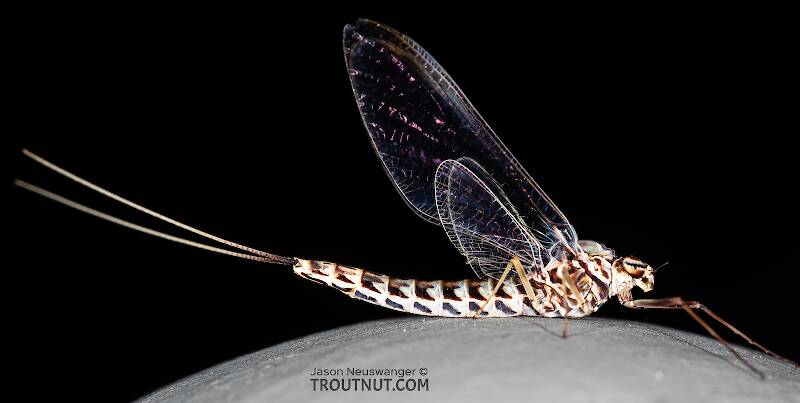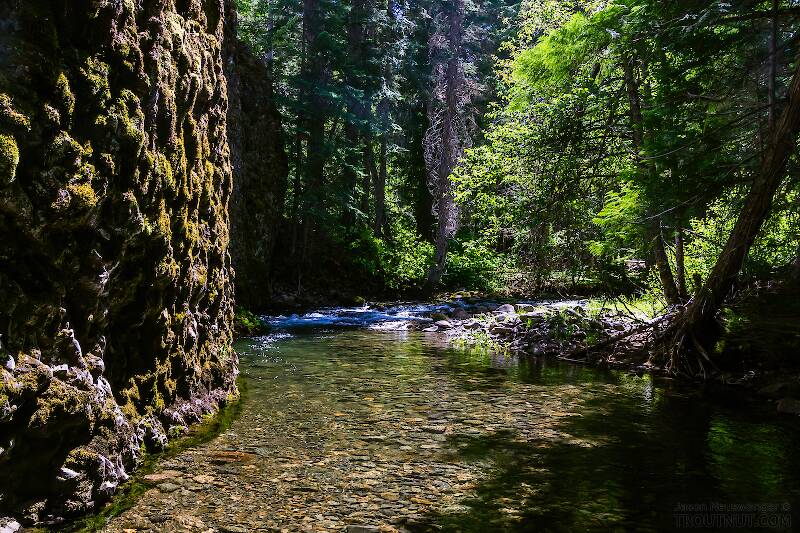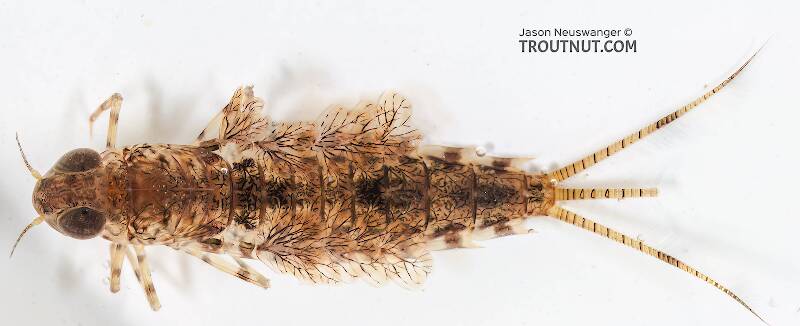
Salmonflies
Pteronarcys californica
The giant Salmonflies of the Western mountains are legendary for their proclivity to elicit consistent dry-fly action and ferocious strikes.


Mayfly Species Siphlonurus alternatus (Gray Drakes)
Where & when
Time of year : Early May through early September; peaking from late June through July
In 61 records from GBIF, adults of this species have been collected during July (44%), June (26%), August (23%), and May (7%).
In 285 records from GBIF, this species has been collected at elevations ranging from -30 to 2933 ft, with an average (median) of 689 ft.
Species Range
Spinner behavior
Time of day: Evening
Habitat: Riffles
Physical description
Most physical descriptions on Troutnut are direct or slightly edited quotes from the original scientific sources describing or updating the species, although there may be errors in copying them to this website. Such descriptions aren't always definitive, because species often turn out to be more variable than the original describers observed. In some cases, only a single specimen was described! However, they are useful starting points.
Male Spinner
Wing length: 12 mm
A rather large, somewhat pale species, with conspicuous ventral markings (see fig. 119).
Head whitish. Thorax yellowish brown. Wide reddish brown median stripe on metanotum and lateral margins of mesoscutellum. Scutella dark brown. Pleural sutures brown. Purplish red marks anterior to wing roots. Prosternum white, marked with two dark brown triangles. White band across anterior portion of mesosternum, enclosing a dark median spot.
Fore leg of male longer than body; yellowish. Apical dark band on femur; knee brown; apex of tibia, and tarsal joinings, brown. Femora of middle and hind legs whitish, with apical brown band. Tibiae and tarsi yellowish, joinings brown. Longitudinal veins of fore wing, and costal margin of hind wing, purplish black. Humeral cross vein purplish black. Costal cross veins before bulla pale, almost invisible; in stigmatic area pale brown, numerous, somewhat irregular, a few anastomosed. All other veins brown, the longitudinal veins all pale at the wing root.
Abdomen pinkish white, marked with chestnut brown. Posterior margins of tergites widely banded with brown; wide median brown streak; usual brown triangles and oval spots, the latter very prominent. Pale areas on anterior margin extensive. Tergites 8-10 with large powdery white areas. Ventrally, no lateral patch. Oblique lines extend from near the postero-lateral angle almost to the anterior margin near the median line, ending in a black dot. A pair of smaller black dots near center of each sternite, on each side of median line. A dark brown triangle on median line at the anterior margin. Sternites 7-9 of the female, and 9 of the male, largely yellow with reddish markings. Dark lateral mark on sternite 9 of the male.
Forceps yellowish. Penes yellow tipped with black. Tails reddish brown at the extreme base, becoming yellow and finally white in the distal portion. Joinings rather widely dark purplish brown. Penes as in fig. 123.
Nymph
Nymph has double gills on all abdominal segments, one member of the 7th pair being very small (see 120). Femur with an apical brown band; tibia banded near base; tarsus twice banded. Usual black band across tail, beyond the middle. Ventral markings comparable to those of the imago. This species, originally described from the middle west, is common throughout eastern North America.
Specimens of the Mayfly Species Siphlonurus alternatus
1 Female Spinner

1 Nymph
Start a Discussion of Siphlonurus alternatus
References
- Arbona, Fred Jr. 1989. Mayflies, the Angler, and the Trout. Nick Lyons Books.
- Caucci, Al and Nastasi, Bob. 2004. Hatches II. The Lyons Press.
- Knopp, Malcolm and Robert Cormier. 1997. Mayflies: An Angler's Study of Trout Water Ephemeroptera . The Lyons Press.
- Leonard, Justin W. and Fannie A. Leonard. 1962. Mayflies of Michigan Trout Streams. Cranbrook Institute of Science.
- Needham, James G., Jay R. Traver, and Yin-Chi Hsu. 1935. The Biology of Mayflies. Comstock Publishing Company, Inc.
- Swisher, Doug and Carl Richards. 2000. Selective Trout. The Lyons Press.
Mayfly Species Siphlonurus alternatus (Gray Drakes)
Species Range
Common Names
Resources
- NatureServe
- Integrated Taxonomic Information System
- Global Biodiversity Information Facility
- Described by Say (1824)


